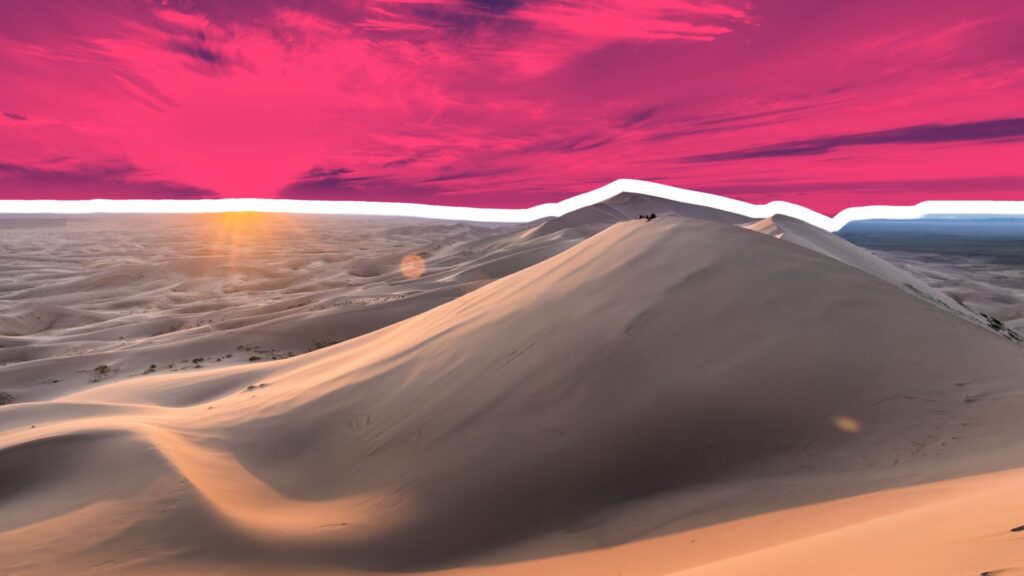The Gobi Desert fascinates many, yet few know its true wonders. This vast expanse holds secrets waiting to be uncovered.
As a traveler who’s explored its dunes, I know how captivating this landscape can be. I’m here to share insights that’ll make your 2024 Gobi adventure unforgettable.
In this article, I’ll reveal over 37+ facts about the Gobi Desert. You’ll learn about its unique geography, rich history, and diverse wildlife. I’ll also give tips on the best times to visit and must-see spots.
By the end, you’ll have all the info you need to plan an amazing trip to this incredible desert.
Let’s start our journey through the Gobi!
Location and Geography
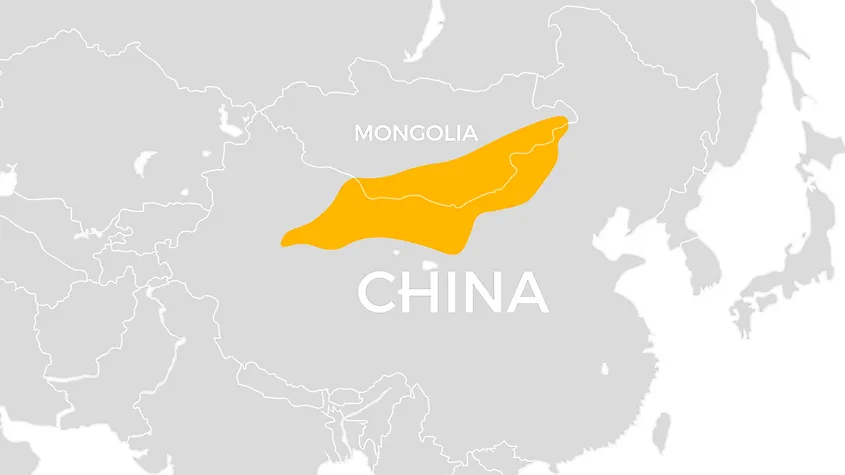
1. Spanning two countries, the Gobi Desert stretches across southern Mongolia and northern China. This vast expanse covers an area larger than many European countries combined. Its unique location contributes to a diverse landscape, including rocky plateaus, grassy steppes, and sandy dunes.
2. Asia’s largest desert, the Gobi, covers about 1,295,000 square kilometers (500,000 square miles). To put it in perspective, that’s nearly as big as Alaska! This huge expanse makes it a major geographical feature of Central Asia, influencing weather patterns and ecosystems far beyond its borders.
3. Five distinct ecological regions make up the Gobi. These include the Eastern Gobi desert steppe, the Alashan Plateau semi-desert, the Gobi Lakes Valley desert steppe, the Dzungarian Basin semi-desert, and the Tian Shan range. Each region boasts its own unique mix of plant and animal life adapted to its specific conditions.
4. Khongoryn Els sand dunes, also known as the “Singing Sands,” are a remarkable feature of the Gobi. These dunes can reach heights of up to 300 meters. When the wind blows over them, they create a unique humming sound, resulting in an eerie yet beautiful natural phenomenon that attracts many visitors.
Climate and Weather
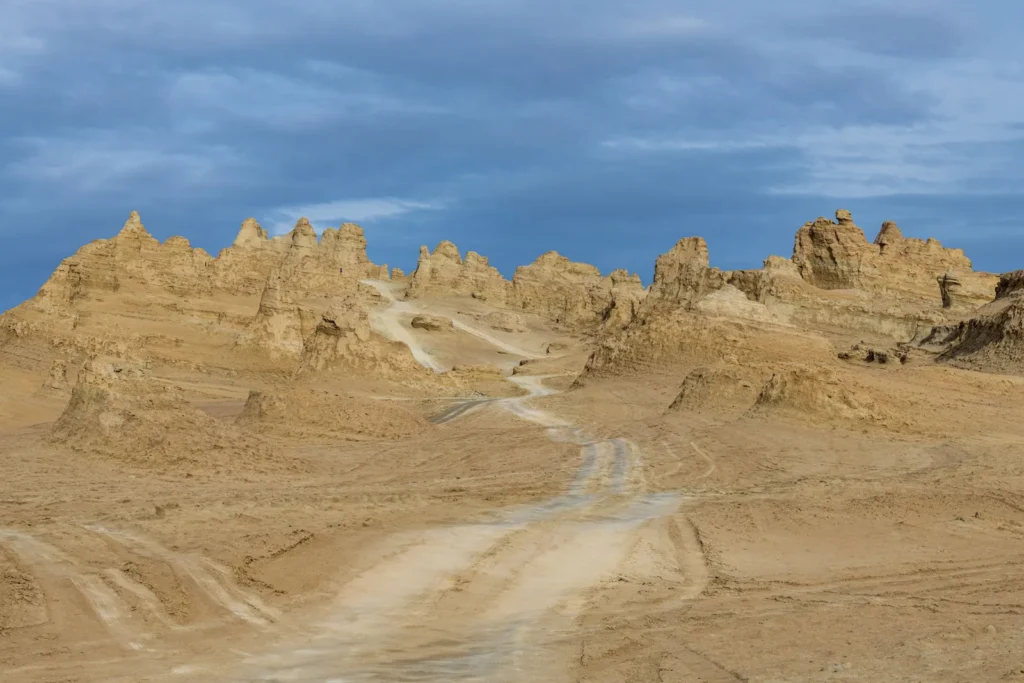
5. Unlike hot deserts like the Sahara, the Gobi experiences freezing winter temperatures. In January, the mercury can plummet to -40°C (-40°F). This extreme cold creates a challenging environment for both plants and animals, leading to unique adaptations among the desert’s inhabitants.
6. Extreme temperature fluctuations characterize the Gobi’s climate. In a single day, temperatures can swing from -40°C (-40°F) to 50°C (122°F). These dramatic changes occur due to the desert’s high altitude and lack of humidity, making it one of the most challenging environments on Earth.
7. Rainfall in the Gobi is scarce, with the desert receiving only 100-200 millimeters (4-8 inches) of rain per year on average. Some areas get even less, making it one of the driest places on Earth. This lack of water shapes the entire ecosystem, from the types of plants that can grow to the animals that can survive.
8. Climate change is causing rapid expansion of the Gobi’s boundaries. Scientists predict that by 2024, it could be up to 2.5% larger than it is today. This growth threatens nearby grasslands and agricultural areas, potentially impacting local communities and ecosystems.
Historical Significance

9. Ancient trade routes of the Silk Road traversed the Gobi Desert. For centuries, caravans crossed this harsh landscape, carrying goods between China and the West. These routes facilitated not only commerce but also cultural exchanges that shaped Central Asian history.
10. Paleontologists have made groundbreaking dinosaur fossil discoveries in the Gobi. In the 1920s, American scientist Roy Chapman Andrews led expeditions that unearthed numerous fossils, including the first discovery of dinosaur eggs. These findings revolutionized our understanding of dinosaur biology and behavior.
11. Genghis Khan, one of history’s most famous conquerors, united the nomadic tribes of the Gobi region. From this harsh desert, he built the Mongol Empire, which at its peak stretched from China to Eastern Europe, becoming the largest contiguous land empire in history.
12. Scientific exploration of the Gobi spans centuries. From Marco Polo’s travels in the 13th century to modern geological surveys, this desert continues to fascinate researchers. Its unique environment provides valuable insights into climate change, geology, and biological adaptation.
Flora and Fauna
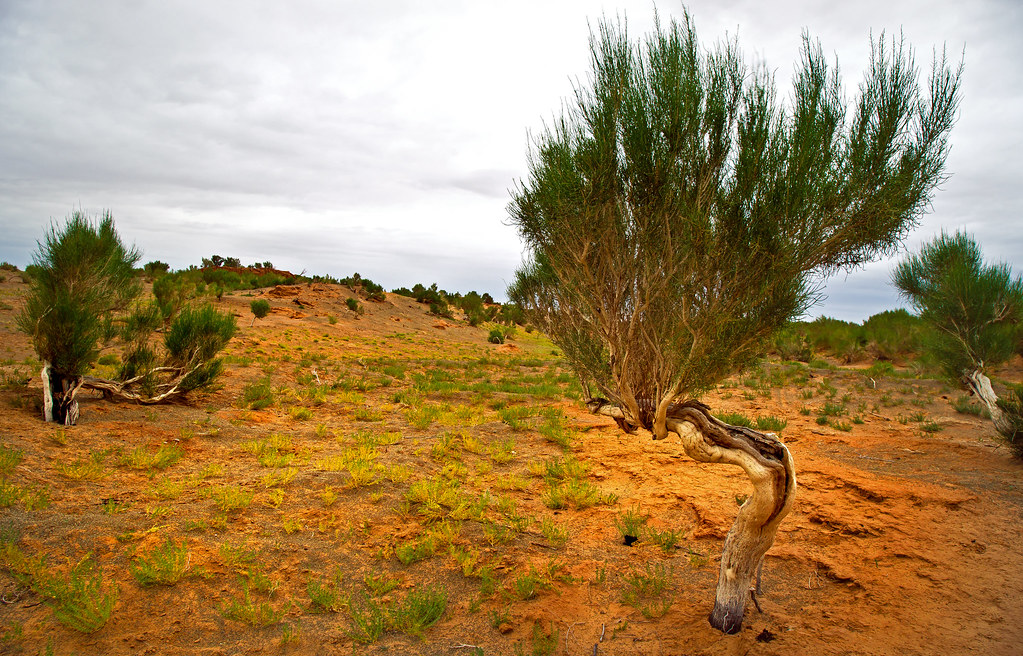
13. Saxaul trees, hardy shrubs native to the Gobi, play a crucial role in the ecosystem. Their deep roots help stabilize the soil and prevent erosion. These trees also provide shelter and food for various desert animals, making them a keystone species in this harsh environment.
14. Bactrian camels, with their distinctive two humps, are perfectly adapted to the Gobi’s extreme conditions. Their humps store fat, not water, providing energy for long periods without food. Their wide, padded feet allow them to walk easily on sand, making them invaluable to both wildlife and local people.
15. Snow leopards, though rare, inhabit the mountainous regions of the Gobi. These elusive big cats are well-adapted to the cold, with thick fur and wide paws for traversing snowy terrain. Conservation efforts in 2024 are focusing on protecting these endangered animals and their habitats.
16. Conservation initiatives in the Gobi are expanding in 2024. Projects focus on protecting endangered species like the wild Bactrian camel and the Gobi bear. These efforts involve local communities, promoting sustainable practices that benefit both wildlife and people living in the region.
Human Inhabitants
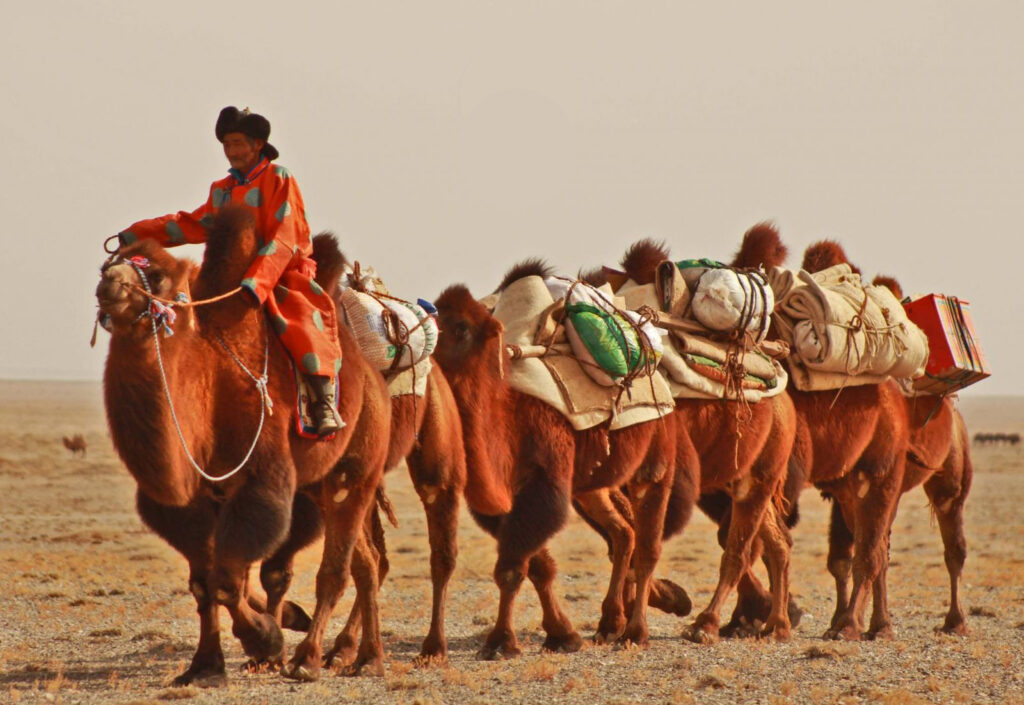
17. Nomadic communities have called the Gobi home for thousands of years. These people, including Mongolian and Kazakh groups, have developed unique lifestyles adapted to the harsh desert environment. They move seasonally with their livestock, following traditional patterns of migration.
18. Ger living remains a central part of Gobi nomadic culture. These portable round tents, also known as yurts, are perfectly suited to a nomadic lifestyle. Made of felt and wood, gers can be easily dismantled and transported, providing shelter in the desert’s extreme conditions.
19. Traditional practices of Gobi inhabitants include horseback riding and eagle hunting. These skills, passed down through generations, are not just practical but also important cultural traditions. In 2024, efforts are being made to preserve these practices while adapting to modern challenges.
20. Modernization is slowly changing life in the Gobi. Some nomadic families are settling in towns, while others are adopting solar panels and satellite phones. This blend of traditional and modern lifestyles creates a unique cultural landscape in the desert regions.
Famous Landmarks
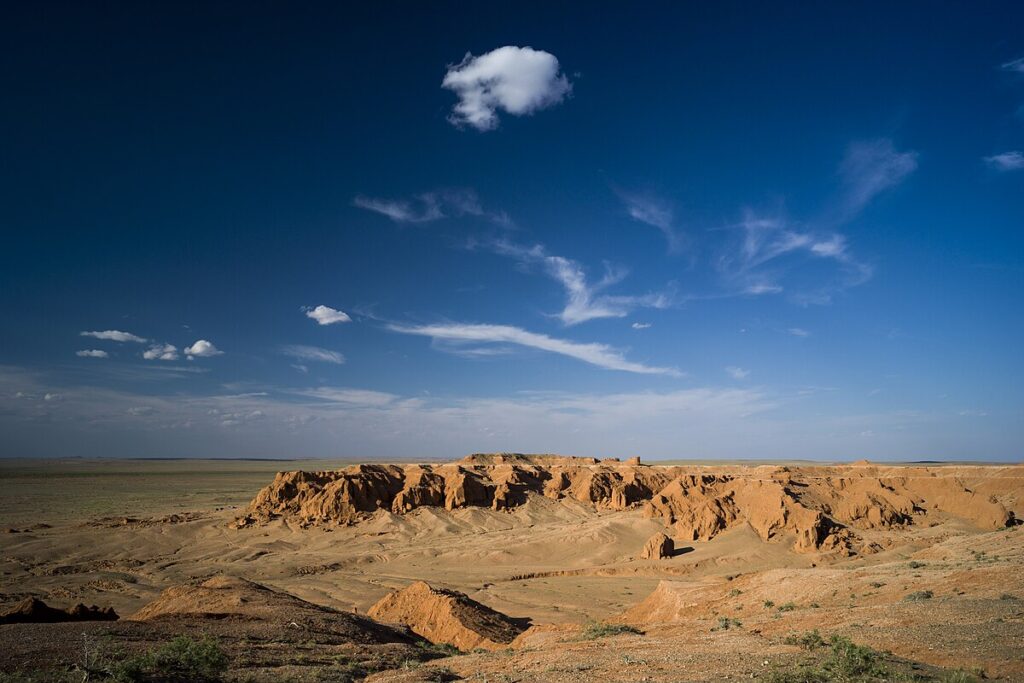
21. Flaming Cliffs, known locally as Bayanzag, are a major attraction in the Gobi. These vivid orange sandstone cliffs got their name from their fiery appearance at sunset. They’re also famous for the numerous dinosaur fossils found in the area, including the first discovered dinosaur eggs.
22. Yolyn Am, or the Vulture’s Mouth, is a narrow gorge in the Gobi Gurvansaikhan National Park. This scenic canyon features towering rock walls and, surprisingly, a persistent ice field that often lasts well into summer, creating a stark contrast to the surrounding desert landscape.
23. Khermen Tsav, a red-rock canyon in the western Gobi, stretches for about 200 kilometers. This vast system of canyons and ravines is home to unique rock formations and ancient petroglyphs. It’s a testament to the geological forces that have shaped the Gobi over millions of years.
24. The ruins of Ongiin Khiid monastery complex offer a glimpse into the Gobi’s religious history. Once home to over 1,000 monks, it was destroyed during the Stalinist purges of the 1930s. Today, its partially restored ruins stand as a poignant reminder of Mongolia’s Buddhist heritage.
Tourism in the Gobi
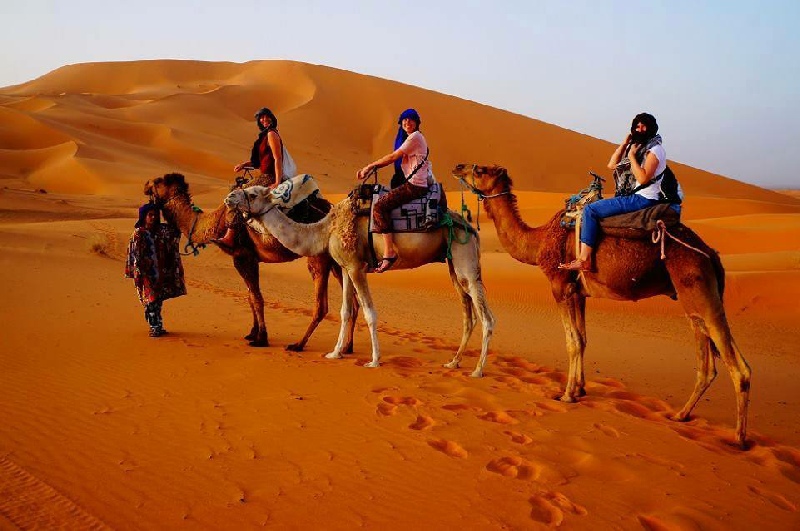
25. Camel trekking remains one of the most popular tourist activities in the Gobi. Visitors can experience the desert as nomads have for centuries, riding Bactrian camels across the dunes. These treks often include nights spent in traditional ger camps, offering an immersive cultural experience.
26. Stargazing in the Gobi is an unforgettable experience. The desert’s clear, dry air and lack of light pollution make it an ideal spot for astronomy enthusiasts. In 2024, several tour operators are offering specialized stargazing trips, complete with high-powered telescopes and expert guides.
27. Eco-friendly tourism is on the rise in the Gobi. Tour operators are increasingly offering low-impact experiences that prioritize environmental conservation. These might include solar-powered ger camps, guided nature walks focusing on desert ecology, and opportunities to participate in local conservation projects.
28. Visiting the Gobi in 2024 requires careful planning. The best times to visit are typically spring (May to June) and fall (September to October) when temperatures are milder. Visitors should be prepared for extreme weather conditions and bring appropriate gear, including warm clothing even in summer.
Economic Importance
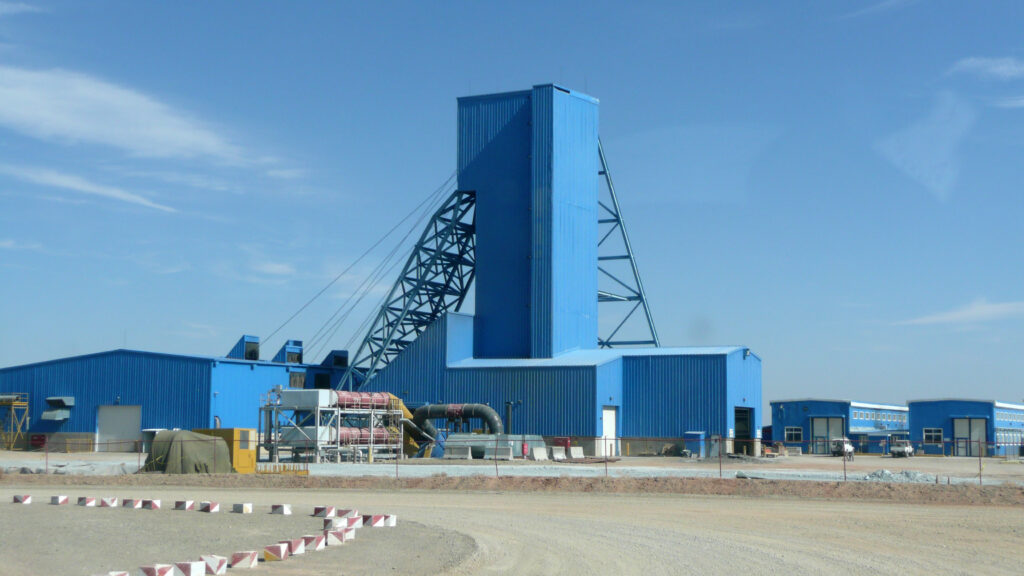
29. Mining plays a significant role in the Gobi’s economy. The desert is rich in minerals, including coal, copper, and gold. The Oyu Tolgoi mine, one of the world’s largest copper and gold mines, is located in the South Gobi region and contributes significantly to Mongolia’s GDP.
30. Traditional herding remains an important economic activity in the Gobi. Nomadic herders raise goats, sheep, horses, and camels. The cashmere from Gobi goats is particularly prized, forming a significant part of Mongolia’s export economy.
31. Renewable energy projects are gaining ground in the Gobi. The vast, open spaces and abundant sunlight make it an ideal location for solar farms. In 2024, several large-scale solar projects are underway, aiming to harness the desert’s potential as a clean energy source.
32. Tourism is becoming an increasingly important part of the Gobi’s economy. As interest in eco-tourism and adventure travel grows, more local communities are benefiting from tourist income. This is helping to diversify the region’s economy and providing alternatives to mining and herding.
Environmental Challenges
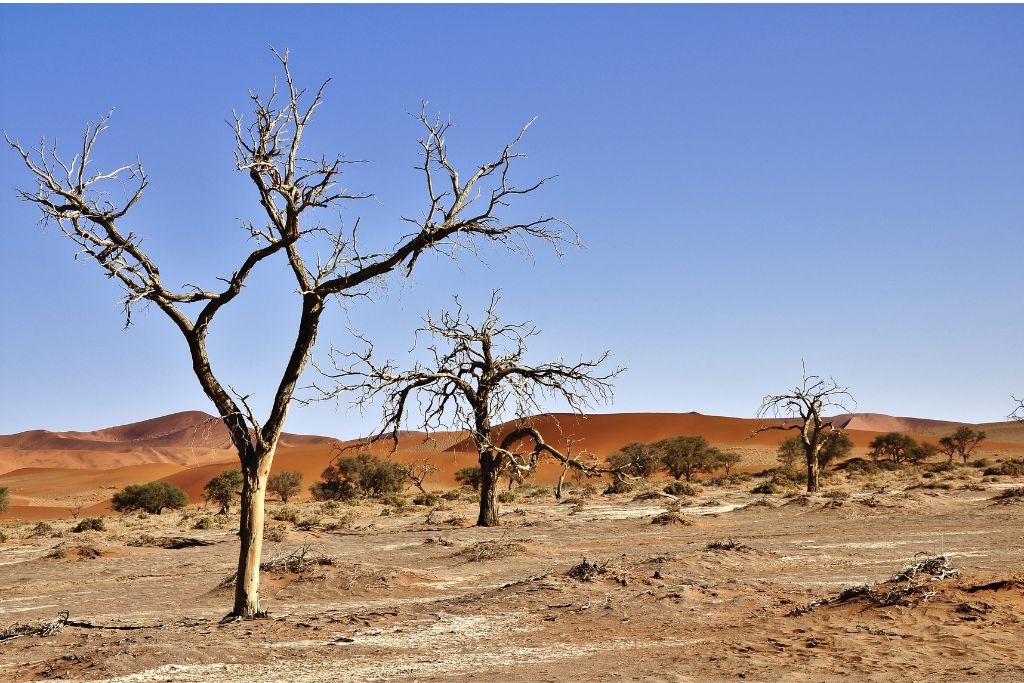
33. Desertification is a major concern in the Gobi region. The desert is expanding at an alarming rate, partly due to climate change and overgrazing. This expansion threatens nearby grasslands and agricultural areas, potentially displacing communities and wildlife.
34. Water scarcity is an ongoing issue in the Gobi. As the climate changes and human demand increases, water resources are becoming increasingly strained. In 2024, several projects are focusing on sustainable water management, including the use of traditional nomadic techniques.
35. Air pollution from dust storms is intensifying in the Gobi. These storms, exacerbated by desertification and climate change, can carry dust particles thousands of kilometers. They not only affect local air quality but can impact weather patterns across East Asia.
36. Conservation efforts in the Gobi are gaining international attention in 2024. Organizations are working to protect endangered species, preserve traditional nomadic cultures, and combat desertification. These efforts often involve collaboration between local communities, governments, and international NGOs.
Interesting and Unique Facts
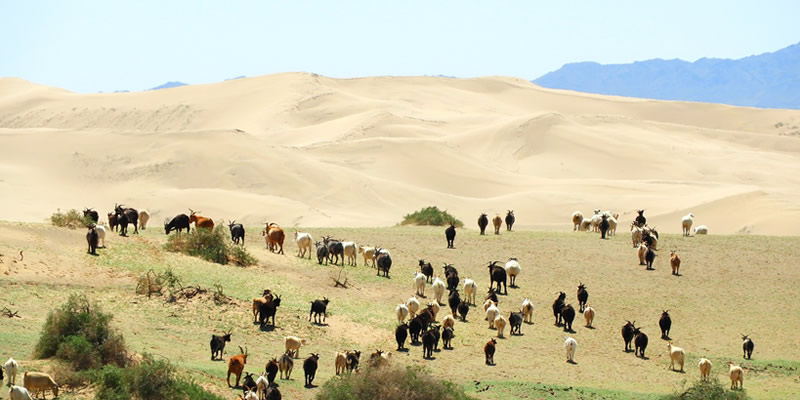
37. The Gobi is one of the world’s fastest-growing deserts. It’s estimated to be expanding by more than 3,600 square kilometers (1,390 square miles) per year. This rapid growth is largely due to human activities like deforestation and overgrazing, combined with the effects of climate change.
38. Despite its reputation as a barren wasteland, the Gobi is home to a surprising diversity of landscapes. From towering sand dunes to grassy steppes, rocky mountains to seasonal lakes, the desert’s varied terrain supports a wide range of ecosystems.
39. The Gobi has inspired numerous myths and legends. One famous tale is that of the Mongolian Death Worm, a supposedly giant, deadly worm said to inhabit the Gobi. While no scientific evidence supports its existence, the legend continues to fascinate cryptozoology enthusiasts.
40. Contrary to popular belief, much of the Gobi is not sandy desert but bare rock. Only about 3% of the Gobi is covered in sand dunes. The rest consists of gravel plains and rocky outcrops, creating a landscape that’s more diverse and hospitable to life than many people imagine.
Conclusion
I hope you’ve gained a new appreciation for this incredible landscape as we wrap up our journey through the Gobi Desert.
From its vast expanse to its unique wildlife, the Gobi is a wonder of nature. Whether planning a visit in 2024 or just daydreaming about far-off places, remember that the Gobi is more than just sand and rocks.
It’s a place of history, culture, and surprising diversity.
If you’re inspired to explore the Gobi, start planning your trip now. Remember to travel responsibly and respect the delicate desert ecosystem.
And if you can’t visit in person, keep learning about this fascinating region. The more we understand places like the Gobi, the better we can protect them for future generations.
Have you been to the Gobi? Share your experiences in the comments below!

